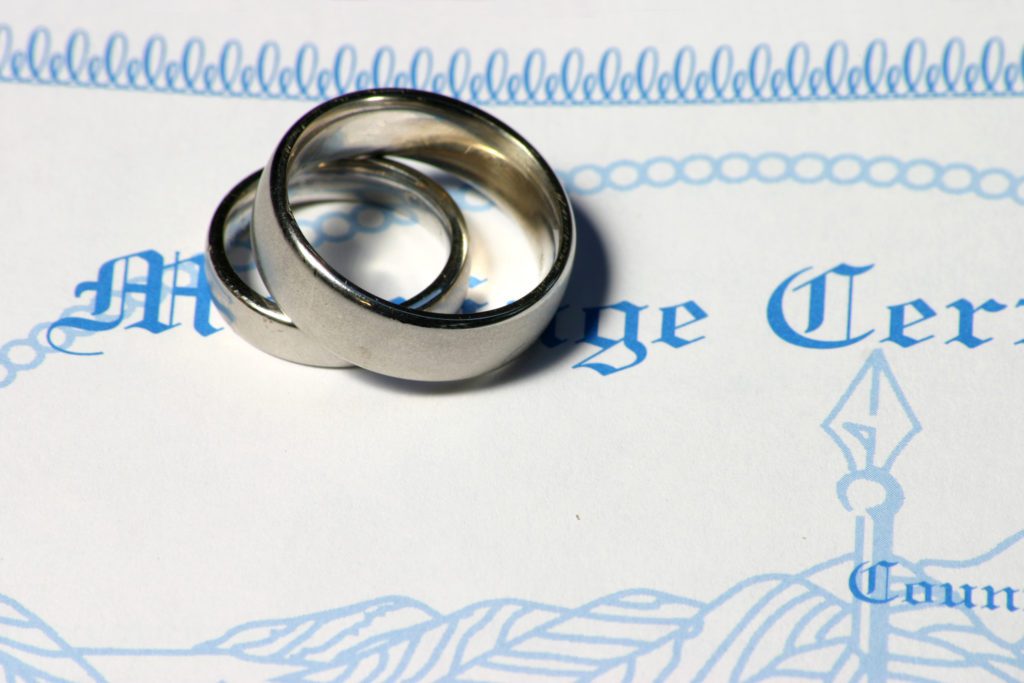If you came to the United States on a K-1 fiance visa, got married, and got your 2-year conditional green card, the I-751 Petition to Remove Conditions on Residency is going to be an important part of your immigration journey.
Here’s what you need to know about the type of evidence you must provide – and what else USCIS might need from you both. In many cases, it’s a good idea to work with a Norfolk immigration attorney who can fill out your petition, provide you with guidance on evidence and file your paperwork for you.

The K-1 Visa and I-751 Petition to Remove Conditions
Because you got your green card after being married to your United States citizen spouse for less than 2 years, you were granted conditional permanent residency. Now, 2 years later (or 1 year and 9 months to be exact), you need to petition to remove the conditions on your permanent residency. Your petition needs to show that your marriage to your spouse was not just for a green card and that you actually have a real bona fide marriage.
U.S. Citizenship and Immigration Services suggests that you provide as much evidence as possible from the date of your marriage to the present to show that you are in a bona fide marriage. Some of the different kinds of evidence they will want to see are:
- Evidence of shared resources and a family home
- Proof that you share children
- Insurance documents
- Estate documents
- Proof that you two have vacationed together
- Photos from special occasions and evidence of gifts given to each other
- Letters and other correspondence between you
Remember, not all kinds of evidence may apply to you, but you should gather as much of as many different kinds of evidence as possible. Here’s a closer look at each of the above-listed types of evidence.

Evidence of Shared Resources and a Family Home
In order to show USCIS that it should remove the conditions on your two-year, conditional green card, you should provide evidence that you and your spouse share financial resources and that you live as a family unit. This evidence will accompany your I-751 petition. This proof can include things like:
- Jointly held financial accounts
- Jointly filed Federal income tax returns
- Investment account statements
- Credit card and loan statements
- Pensions, 401ks, or other retirement plans naming the other as beneficiary
- Bills of sale for vehicles or other large purchases you made together
- A copy of your lease, mortgage or deed for your home
- Utility bills in both your names
If you’re living apart, you will have to provide USCIS with a good explanation for it (and provide additional evidence that proves your marriage is valid). For example, if one of you had to move for work but the other will be following along soon, you’ll have to show USCIS proof that you’re definitely married for valid reasons, but that circumstances dictate you temporarily live apart.
Proof That You Share Children
If you and your spouse have children, USCIS will want to see copies of their birth certificates with both your names listed. Likewise, adoption records count. However, you don’t have to have children in order to prove the validity of your marriage – the U.S. government doesn’t require you to have children.
Insurance Documents
Health and life insurance documents are a good form of proof that your marriage is valid. USCIS wants to see that you’re covered by your spouse’s insurance – or that he or she is covered by yours – and that even extends to things like car insurance and homeowner’s or renter’s insurance.
Estate Documents
Estate documents like wills, trusts, and burial plot receipts can also serve as evidence for USCIS. These types of documents show that a marriage is valid – people who only marry for immigration benefits don’t typically include each other in wills or plan to be buried together.

Proof That You Have Vacationed Together
If you have proof that you and your spouse have vacationed together – including trips to your country of origin, where you both spent time with your family – provide it to USCIS. The same is true for your honeymoon or other vacations you’ve taken together. If you and your spouse haven’t traveled together, that’s okay, too; this type of evidence isn’t required, because the government realizes that not everyone has the financial resources or time to take vacations.
Photos From Special Occasions and Evidence of Gifts Given to Each Other
You can – and should – share wedding photos and pictures of you and your spouse together on other special occasions with USCIS. These types of photos demonstrate that you actually attend events together and that your marriage is based on love, care and affection rather than immigration benefits. You can even show receipts for birthday gifts, anniversary gifts and other gifts to show that your marriage is valid.
Letters and Other Correspondence Between You
Letters, emails, text messages, and social media posts between you and your spouse can help prove that you have a valid marriage. You can also provide letters, cards, and emails that other people have addressed to both of you as a couple. If you’d like, you can also submit a personal statement that explains how you met your spouse and includes details about your relationship to prove that your marriage is based on love and affection; you can also submit affidavits from other people who know you both.
About the I-751 Petition to Remove Conditions
You have to file the I-751 if you want to remove the conditions on your U.S. residency. The form’s primary purpose is to show that you are eligible to have your conditions removed because your marriage is valid and was not entered into just to receive a green card.
The petition itself has 11 parts:
- Information About You. This part covers your personal information, such as your name, your Alien Registration Number, and your country of birth.
- Biographic Information. This section covers personal details, such as your race and ethnicity, height and weight, and eye and hair color.
- Basis for Petition. This part asks you what basis you have for removing the conditions on your residency.
- Information About the U.S. Citizen or Lawful Permanent Resident Spouse. This section asks about your spouse, including his or her name, birth date and Social Security number.
- Information About Your Children. This part is only for people who have children; if you don’t have kids, you can skip it.
- Accommodations for Individuals With Disabilities and/or Impairments. This section is only for people who are requesting accommodations because of disabilities or other issues; if you’re not, you can skip it.
- Petitioner’s Statement, Contact Information, Acknowledgement of Appointment at USCIS Application Support Center, Certification, and Signature. This section is required, and you must sign your form or USCIS will reject it.
- Spouse’s Statement. This section includes all the same information that the previous one does, but the details required are for your spouse, not you.
- Interpreter’s Contact Information, Certification, and Signature. You only need to fill out this section if you are using an interpreter.
- Contact Information, Statement, Certification, and Signature of the Person Preparing This Petition, if Other Than the Petitioner. You only need to have this section filled out if someone other than you is preparing your petition. Otherwise, you can leave it blank.
- Additional Information. This section is only for additional information that won’t fit in other sections.
If your attorney is preparing this form for you, you don’t have to worry about any of the sections – all you need to do is provide proof of a valid relationship to show USCIS that it should remove the conditions on your residency. You’ll give the proof to your attorney, who will file it with your petition.
Do You need to Talk to an Attorney About the I-751 Petition to Remove Conditions on your Residency?
We may be able to help you if you need assistance with a K-1 visa, your initial adjustment of status, your petition to remove the conditions on your residency, or any other immigration-related issue. Call us today at 757-464-9224 to schedule a consultation with an attorney who will answer your questions and give you the guidance you need to remove conditions on your residency.